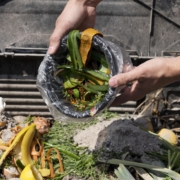Organic waste: what it is, how to separate it and how to make use of it
If you want to understand organic waste (biowaste) in a clear and actionable way, here are the essentials: what it includes, why it is important to separate it, how to treat it (composting and biogas) and what regulations you must comply with.
What is organic waste?
In Spain, domestic biowaste is biodegradable organic waste of plant and/or animal origin generated in households and businesses (similar to domestic waste). It includes food scraps and garden waste, among other things.
Mandatory separation in the EU: what the law says
Separate collection of bio-waste has been mandatory in the EU since 31 December 2023, or recycling at source (domestic/community composting). The European Commission includes this in its separate collection guide and emphasises that bio-waste must be sent for biological recycling (e.g. composting or digestion). European Commission
Furthermore, the European circular economy platform and sectoral documents emphasise that composting and anaerobic digestion are considered recycling when the compost or digestate is used as a recycled product (fertiliser/manure). circulareconomy.europa.eu
Context and data in Europe
- Weight in recycling: in 2023, the EU recycled (material + composting) 48% of municipal waste; separating organic waste helps to increase this rate. European Commission
- Specific use of organic waste: European estimates place recycled organic waste (composting + digestion) at around 17% of total municipal waste, with considerable room for improvement if it is properly separated at source. compostnetwork.info
Types and examples of organic waste
- Kitchen and dining room: fruit and vegetable scraps, bread, coffee grounds, eggshells; avoid plastics or metals.
- Garden and pruning: leaves, grass, small branches (preferably shredded).
- Shops/hotels: food preparation scraps and leftovers (similar to household waste).
- Sludge and wet bio-waste: depending on flow and local regulations, these can be sent for anaerobic digestion. (Always check your local or regional guidelines).
How are they treated? Composting and biogas (biomethane)
- Composting: converts organic matter into compost that improves soil and closes the carbon cycle. It is recycling when the compost meets usage criteria. circulareconomy.europa.eu
- Anaerobic digestion (biogas/biomethane): enables the generation of energy and fertilisers (digestate). In Spain, the IDAE publishes technical resources and guides to promote biogas/biomethane projects and their proper territorial integration. idae.es
Tip from Reverter Industries: if you work with prunings or plant waste, prepare the material using industrial shredders and wood recycling lines to obtain a consistent size and moisture content before treatment.
How to implement separate waste collection (in your local authority or company)
- Service design: adapts organic waste collection to the urban context (types, composition, frequencies) and integrates the system with the rest of the fractions; it is not ‘just another bin’, it is a reoptimisation of the entire service.
- Containers and signage: brown bins, clear signage and ‘yes/no’ pictograms.
- Pre-treatment: shredding/screening to improve homogeneity (in prunings and green fractions).
- Destination: prioritises composting or anaerobic digestion depending on the flow (drier ↔ wetter).
- Traceability and KPIs: measure uptake, inappropriate waste and cost per tonne; compare with Eurostat to set improvement targets.
Common mistakes (and how to avoid them)
- Inappropriate items (plastic, glass) in organic waste → solve with training and container design (opening and lock).
- Lack of treatment capacity → agree with composting/biogas plants and plan contracts.
- ‘Additive’ collection → re-optimise frequencies for other fractions when organic waste is introduced, as recommended by MITECO. miteco.gob.es
Brief FAQs
- Organic waste = biowaste?
Yes, in municipal management, we often talk about biowaste: biodegradable organic waste of plant/animal origin similar to household waste. miteco.gob.es - Is separate collection mandatory?
Yes, in the EU since 31/12/2023, or recycling at source (compost). European Commission - Composting or biogas, which is better?
It depends on the flow: dry/structured fractions are well suited to composting; wet fractions and sludge are usually better suited to digestion. Both count as recycling if the end product is used. circulareconomy.europa.eu
Conclusion
Organic waste is an opportunity: when properly separated, it can be transformed into compost and renewable energy. Regulations are pushing in this direction, and data shows that there is room for improvement. With service design, pre-treatment and KPI measurement, your city or company can reduce residual waste and gain value.
Would you like us to assess your organic waste collection and pre-treatment (shredding/screening) for composting or biogas? → Let’s talk | See shredding solutions






Leave a Reply
Want to join the discussion?Feel free to contribute!